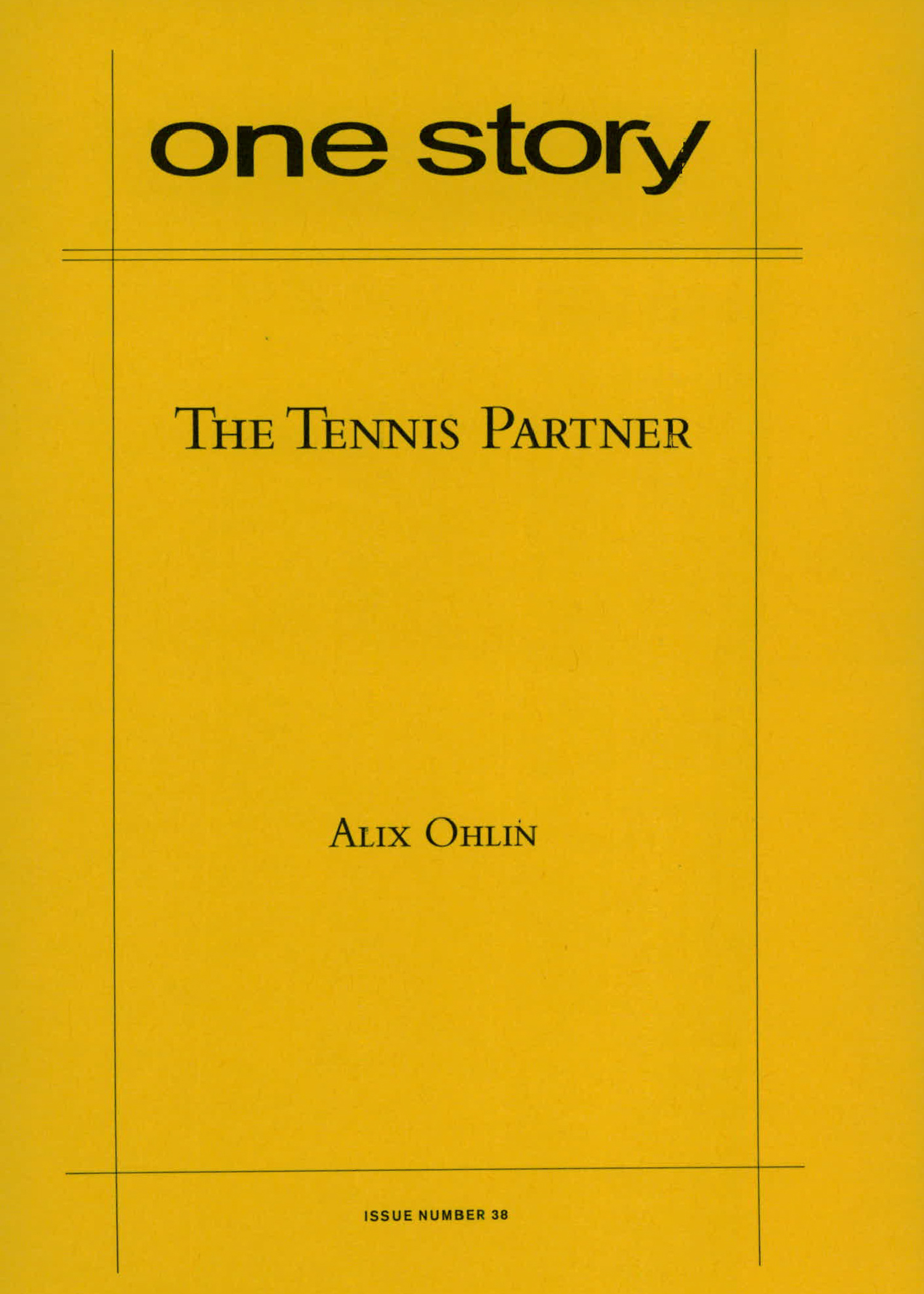
The Tennis Partner
$2.50
Sold out
Excerpt
The first time my father played tennis with Frank McAllister, it was a cool, sunny, the-best-of-summer-is-yet-to-come afternoon in the middle of May. The McAllisters had moved to the neighborhood six months earlier, into a three-bedroom, split-level, single-car-garage ranch identical to ours, and joined the tennis club before it even got warm enough to play. As soon as my father saw Frank hitting practice balls in the frigid spring weather he decided that he’d found a new and noteworthy opponent. Frank was a broad-chested man with short, red hair, pale eyebrows, and pale legs, and his face when he played turned red and wide as a beefsteak tomato, the freckles on it standing out like seeds.
“That guy looks all right,” my father told me, pointing at him unsubtlely with his racket. “Might even pose a challenge.” The thing about my father was that he had no perspective whatsoever on his own game. He thought he was a fair player who compensated for his less than stellar fitness with a strong intellectual grasp of the sport. None of this was true, but it took me years to figure it out.
“Please don’t ever play with that guy,” is what I said to my father at the time. I recognized Mr. McAllister from a drug and alcohol presentation he’d made at my high school earlier that year.
Alix Ohlin
Alix Ohlin is writer-in-residence at Portsmouth Abbey School in Rhode Island. Her first novel, The Missing Person, will be published by Knopf next year.
Q&A by Hannah Tinti
- HT: Where did the idea for this story come from?
- AO: In real life, my father does play tennis, and at one time he had a nemesis, a man whose relentless capacity to win made him into a mythological figure in our family. Recently I happened to run into one of the nemesis’ children, and we got to discussing the past, and I discovered that their family had no memory of this supposedly massive rivalry. In fact my father, when questioned, didn’t remember much about it either. The whole thing was pretty much a fiction. I realized that the idea of a tennis nemesis existed purely for the storytelling pleasure of my siblings and myself, and I decided to write a story about that kind of mythology, how it can bind members of a family to one another and to their shared past.
- HT: Do you play tennis regularly? If so, how long have you been playing for? Why did you choose to write a story about this game?
- AO: I don’t play at all. I’m unbelievably bad at any sport that involves hand-eye coordination, use of a stick or ball or bat, or even keeping score. Which basically cuts out everything except jogging. I’ve always liked watching tennis on TV, though, and other members of my family play, so I know at least a tiny bit about it. Writing a story about tennis is the closest I’ll ever get to participating in the sport, so I enjoyed that.
- HT: The setting of the suburbs plays such a key role in “The Tennis Partner”. Did you grow up in the suburbs? How do you think it plays into the theme of your work?
- AO: I’m from the suburbs, and I used to hate to write about it, as if I thought it weren’t dignified or sophisticated or intellectual enough. My early stories were all about young urbanites living dark, important lives in dark, important cities, and they were all terrible. These days I’ve come around to accepting my suburban past, and to writing about it freely. With “The Tennis Partner,” since I was writing a story about a son paying tribute to a father, I thought I would also take the occasion to pay tribute to the suburbs, and what life there is like—by turns humorous and tragic but also, ultimately, kind of sweet.
- HT: How long did it take you to complete this story?
- AO: I wrote the first draft of this story, which is pretty close to the final version, in a smooth, easy three-day period. I wish my writing were always like that, but it usually isn’t.
- HT: What are you working on now?
- AO: I just finished going through the edits of my novel, The Missing Person, which will be published next year, and I’m writing new stories for a collection that will be published the year after that.